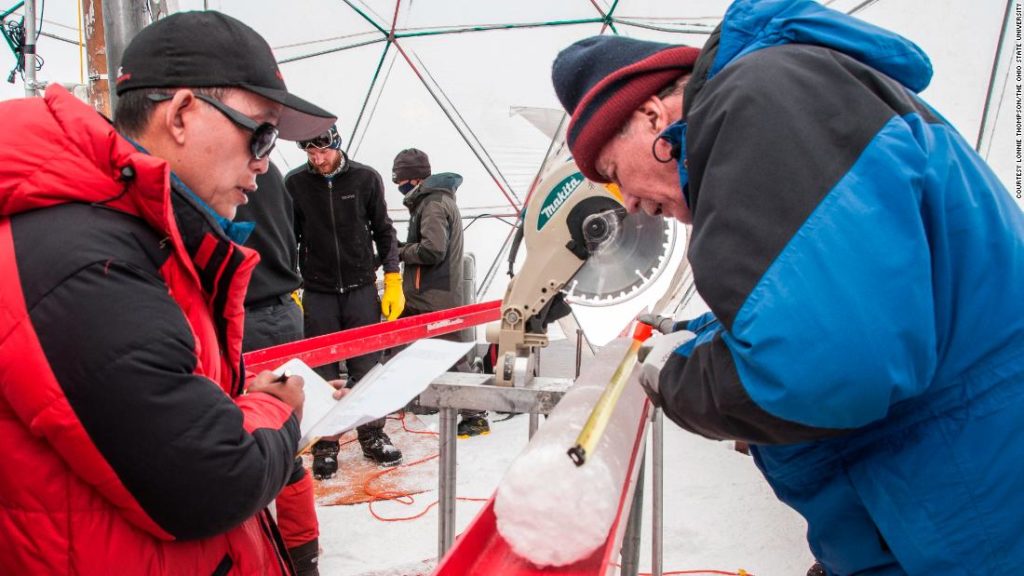A team including climate scientists and microbiologists from Ohio State University took two ice cores from the summit of the Guliya ice cap, at 22,000 feet above sea level, in western China in 2015.
The ice core was 1,017 feet deep, the study’s lead author, microbiologist Zhiping Zhong, told CNN on Thursday. It was then cut into sections three feet long and four inches in diameter.
The team then analyzed the ice and found 33 viruses, at least 28 of which were previously unknown to science and had survived because they were frozen.
The viruses likely originated with soil or plants, rather than with humans or animals, and would have been adapted to extreme conditions, according to the study. They would not be harmful to humans, the researchers told CNN.
Ice captures the contents of the atmosphere through time, including viruses and microbes, according to the study.
“Ice provides a frozen archive,” study co-author Lonnie Thompson, professor of earth sciences at Ohio State and senior research scientist at the university’s Byrd Polar Research Center, told CNN on Thursday.
Relatively little is known about viruses in glaciers, but the field is growing in importance as ice around the world melts as a result of climate change.
“It’s really capturing the public eye,” said Thompson, who added that the Covid-19 pandemic has raised awareness of the importance of learning about microbial communities.
Co-author Matthew Sullivan, professor of microbiology at Ohio State and director of the university’s Center of Microbiome Science, said the methods used in the study allow scientists to assess the evolutionary rates of viruses that are present in different layers of the ice cores.
This could also have benefits in the search for life on Mars, for example.
“Once you’ve developed that new technology it can help you answer questions in other really difficult environments,” Sullivan said.
You may also like
-
Afghanistan: Civilian casualties hit record high amid US withdrawal, UN says
-
How Taiwan is trying to defend against a cyber ‘World War III’
-
Pandemic travel news this week: Quarantine escapes and airplane disguises
-
Why would anyone trust Brexit Britain again?
-
Black fungus: A second crisis is killing survivors of India’s worst Covid wave

